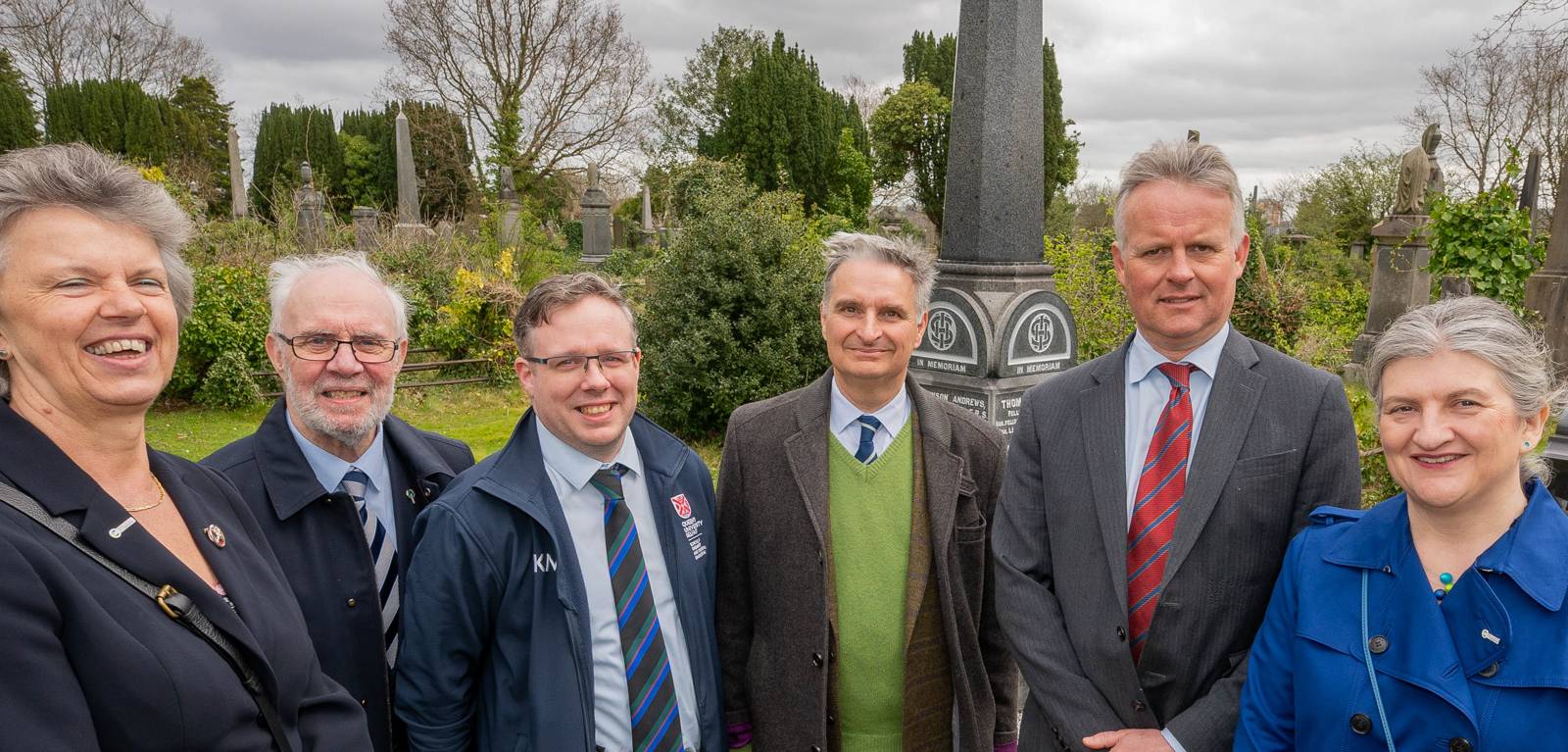Dedicated chemistry collective restores and rededicates grave of Queen’s University science pioneer
The grave of a Northern Irish scientific visionary has been rededicated in a special ceremony after weeks of restoration work in a Belfast cemetery.

Thomas Andrews (1813-1885) was a vice-president and the first professor of chemistry at Queen’s University Belfast between 1845 and 1879.
- Members of the Royal Society of Chemistry’s Northern Ireland Section invested time and money in reviving the 19th-century grave site.
- Volunteers also tracked down members of the Andrews family, who were among those who attended a special ceremony at Belfast City Ceremony.
- The dedication ceremony was conducted by Rev Mark Gallagher, who is a member of the Northern Ireland Local Section, and a wreath was laid by members of Andrews’ extended family.
- Royal Society of Chemistry chief executive Dr Helen Pain was among the speakers at the rededication event.
- Andrews’ contributions to science have previously been celebrated with a National Chemical Landmark blue plaque from the Royal Society of Chemistry and the Royal Medal from the Royal Society.
The grave of a Northern Irish scientific visionary has been rededicated in a special ceremony after weeks of restoration work in a Belfast cemetery.
Members of the Royal Society of Chemistry’s Northern Ireland section engaged Grave Concern Ireland to restore the resting place of Queen’s University Belfast pioneer Thomas Andrews.
The chemical scientist and physicist died in 1885 at the age of 71 and was buried in Belfast City Cemetery at the end of a life that saw him produce research still relevant today.
Among his most findings was the discovery of the ‘critical temperature’ for the liquefaction of carbon dioxide, which is the basis of cryogenics and of low-temperature chemistry and physics. The modern refrigerator was also born out of his research on the liquefaction of gases.
As well as restoring the grave and attending the event, members of the RSC’s Northern Ireland section also tracked down two members of the extended Andrews family who live locally. Robert Andrews is a chemistry teacher at Hazelwood College in Belfast, while Johnny Andrews, a chartered accountant in the city, also hopes news of the celebration will help him to find other descendants of the chemistry great.
“The Northern Ireland Local Section was involved in getting the Chemistry Landmark plaque for Thomas Andrews and it is fitting that now they have helped to restore his grave,” said Dr Dermot Hanna, the secretary of the RSC Northern Ireland local section.
Andrews, who was born and raised in Belfast, took on a number of key roles around the city in the 1830s. In 1835, he became both the professor of chemistry at the Belfast Academical Institution and the attending physician at the Belfast General Hospital. Three years later, he was named medical officer to the Belfast Union Infirmary.
In 1845, he was then appointed the vice-president of the newly established Queen’s University of Belfast, resigning from his teaching position and private practice. He also became the first professor of chemistry at Queen’s and served in both roles until 1879.
As well as establishing himself an authority in scientific circles, he also served as a president of the Belfast Natural History and Philosophical Society, was elected to the Royal Irish Academy, and became a member – and then president – of the Belfast Literary Society.
His work also saw him elected as a fellow of the Royal Society, five years after he received the organisation’s prestigious Royal Medal in 1844.
Queen’s University Belfast pledged its support for the restoration work with a charitable donation. Professor Steven Bell, from the School of Chemistry and Chemical Engineering at Queen’s University Belfast, represented the university at the event.
Prof Bell said: “As an academic institution it is important that we remember and commemorate those who came before us and the achievements they made. Thomas Andrews paved the way in the area of cryogenics and low-temperature chemistry and physics, research that is still as important today as it was when it was discovered.”
Andrews has also previously been honoured by the RSC, which recognised his contribution to science with a National Chemical Landmark blue plaque at the university in 2013. And more than a decade on from that special occasion, the organisation’s chief executive Dr Helen Pain gave a short speech paying tribute to Andrews and the hard-working members of the local section.
“The impact of Thomas Andrews’ work spans generations and the fact it is still relevant today shows how ahead of his time he was,” she said. “We were proud to recognise his efforts with a National Chemical Landmark plaque in 2013 and we are just as proud today to see his resting place restored to a pristine condition.
“The members of the local section have done a tremendous job in transforming the site and we hope more people are reminded of the contributions of Thomas Andrews as a result of their hard work.”
Media
For media inquiries please contact comms.office@qub.ac.uk